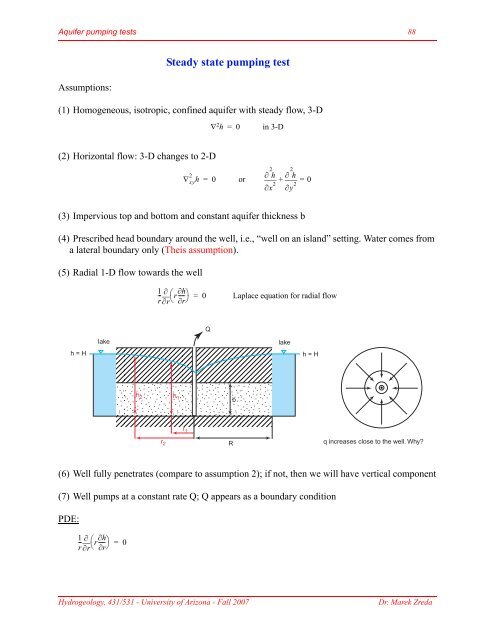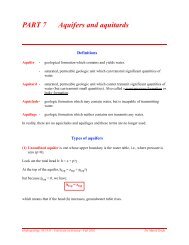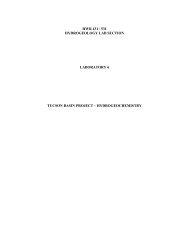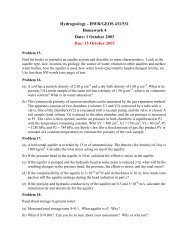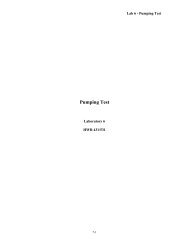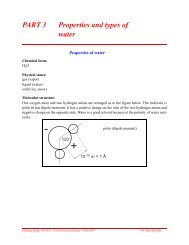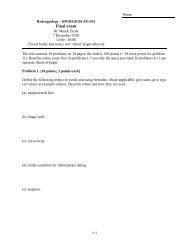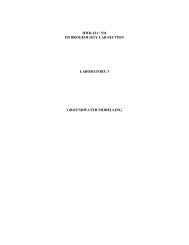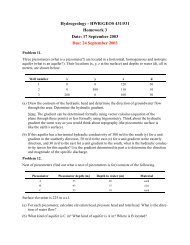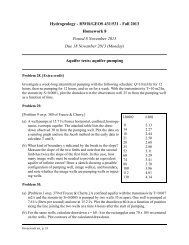PART 12 Aquifer pumping tests - Dr. M. Zreda - University of Arizona
PART 12 Aquifer pumping tests - Dr. M. Zreda - University of Arizona
PART 12 Aquifer pumping tests - Dr. M. Zreda - University of Arizona
Create successful ePaper yourself
Turn your PDF publications into a flip-book with our unique Google optimized e-Paper software.
<strong>Aquifer</strong> <strong>pumping</strong> <strong>tests</strong> 88<br />
Assumptions:<br />
Steady state <strong>pumping</strong> test<br />
(1) Homogeneous, isotropic, confined aquifer with steady flow, 3-D<br />
(2) Horizontal flow: 3-D changes to 2-D<br />
(3) Impervious top and bottom and constant aquifer thickness b<br />
(4) Prescribed head boundary around the well, i.e., “well on an island” setting. Water comes from<br />
a lateral boundary only (Theis assumption).<br />
(5) Radial 1-D flow towards the well<br />
(6) Well fully penetrates (compare to assumption 2); if not, then we will have vertical component<br />
(7) Well pumps at a constant rate Q; Q appears as a boundary condition<br />
PDE:<br />
∇ xy<br />
∇ h 2 = 0 in 3-D<br />
2<br />
h = 0 or<br />
x 2<br />
∂ h<br />
∂ y 2<br />
∂ h<br />
+ = 0<br />
∂<br />
1<br />
--<br />
∂ ⎛ ∂h<br />
r-----⎞ = 0 Laplace equation for radial flow<br />
r ∂r⎝<br />
∂r⎠<br />
=<br />
;;;;<br />
;;;; yyyy ;;;; yyyy<br />
yyyyh<br />
h = H<br />
lake lake<br />
1<br />
--<br />
∂ ⎛ ∂h<br />
r-----⎞ =<br />
0<br />
r ∂r⎝<br />
∂r⎠<br />
h 2<br />
r 2<br />
h 1<br />
r 1<br />
Q<br />
R<br />
b<br />
Hydrogeology, 431/531 - <strong>University</strong> <strong>of</strong> <strong>Arizona</strong> - Fall 2007 <strong>Dr</strong>. Marek <strong>Zreda</strong><br />
2<br />
2<br />
H<br />
q increases close to the well. Why?


